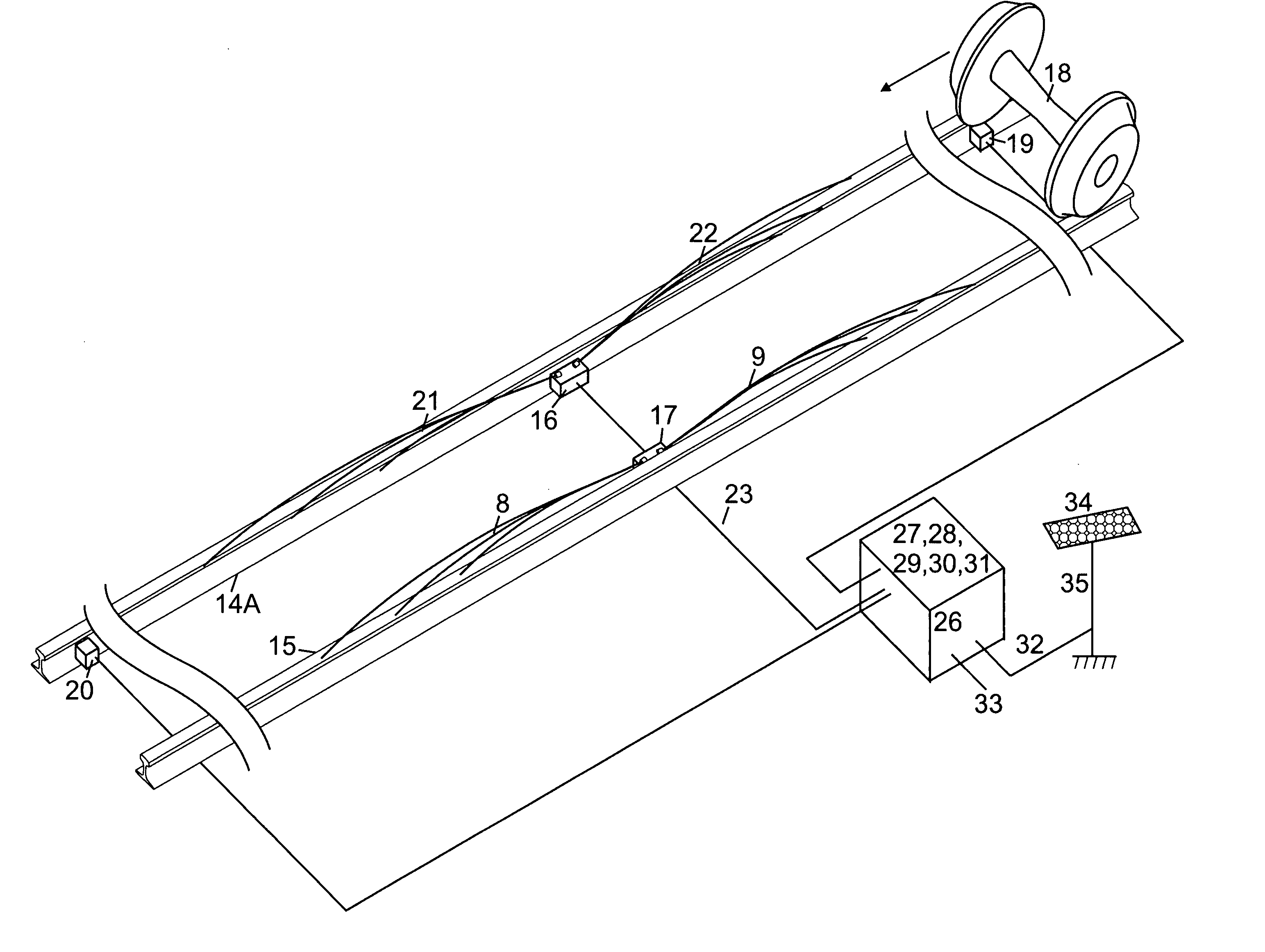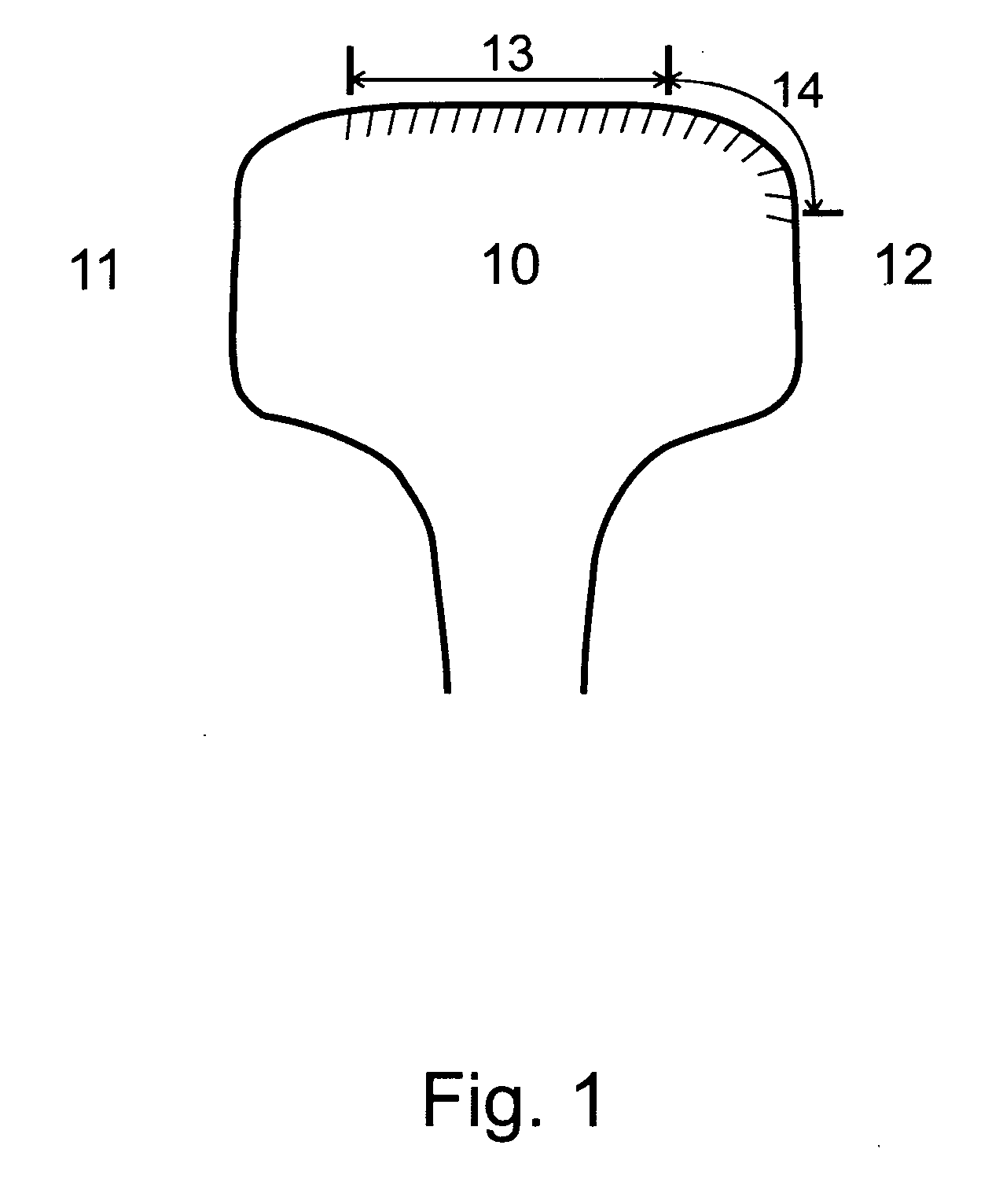Gage side or field side top-of-real plus gage corner lubrication system
- Summary
- Abstract
- Description
- Claims
- Application Information
AI Technical Summary
Benefits of technology
Problems solved by technology
Method used
Image
Examples
Embodiment Construction
[0019]FIG. 1 illustrates the zone of wheel-rail contact on a railhead that defines the regions of the rail requiring lubrication on a curve. The railhead 10 can be either the high rail or the low rail. The field side of the rail is at 11 and the gage side is indicated at 12. The contact area of the wheel on the high rail (for most train operating conditions) is marked with hashed lines. This area can be broken into two regions 13 and 14. Region 13 is essentially the top of the rail and region 14 is the gage corner. The two regions collectively will be referred to herein as the contact area. The wheel tread contacts the rail in different parts of region 13 and the wheel flange contacts the rail in parts or all of region 14. Friction work on the high rail is done by the wheel in both regions 13 and 14. For the low rail a mirror reflection on the right can be considered. However, the contact of wheel and low rail generally lies only in region 13. Only for very low train speeds (below e...
PUM
 Login to View More
Login to View More Abstract
Description
Claims
Application Information
 Login to View More
Login to View More - R&D
- Intellectual Property
- Life Sciences
- Materials
- Tech Scout
- Unparalleled Data Quality
- Higher Quality Content
- 60% Fewer Hallucinations
Browse by: Latest US Patents, China's latest patents, Technical Efficacy Thesaurus, Application Domain, Technology Topic, Popular Technical Reports.
© 2025 PatSnap. All rights reserved.Legal|Privacy policy|Modern Slavery Act Transparency Statement|Sitemap|About US| Contact US: help@patsnap.com



